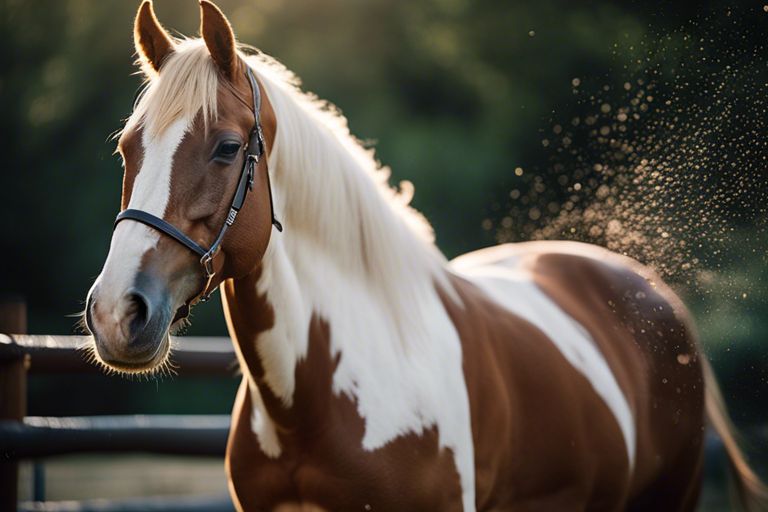You’ve just finished a vigorous workout with your equine companion, and now it’s time to help your horse cool down properly to prevent overheating and muscle stiffness. In this informative guide inspired by C.S. Lewis’s clarity, you will learn the best practices for safely bringing your horse’s body temperature back to normal and promoting your horse’s overall well-being post-exercise.
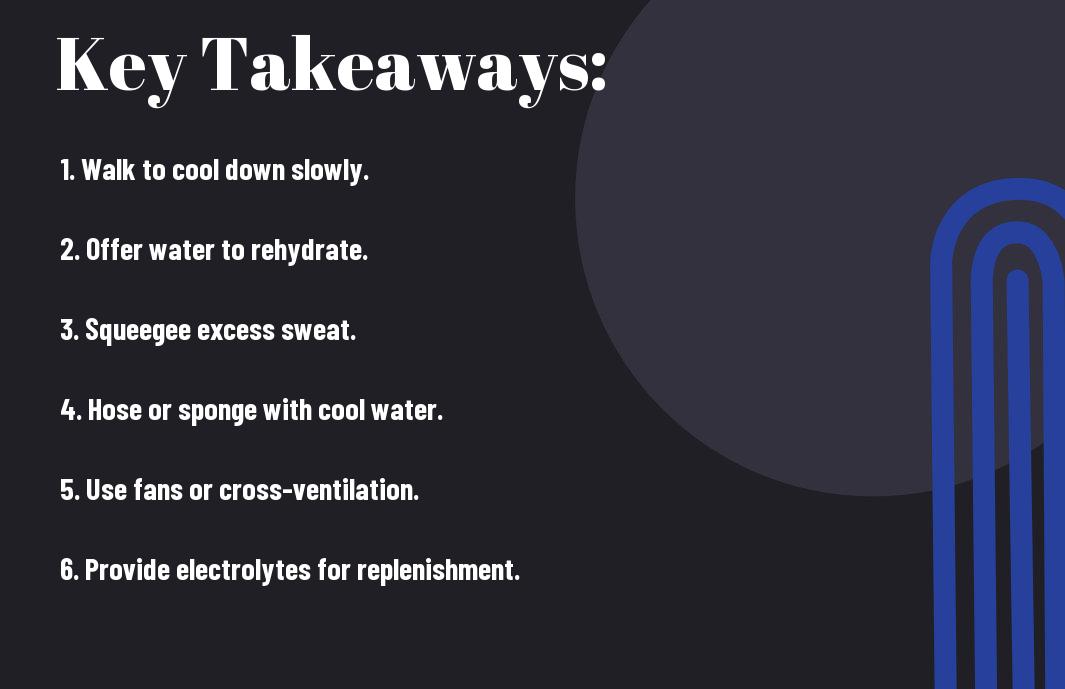
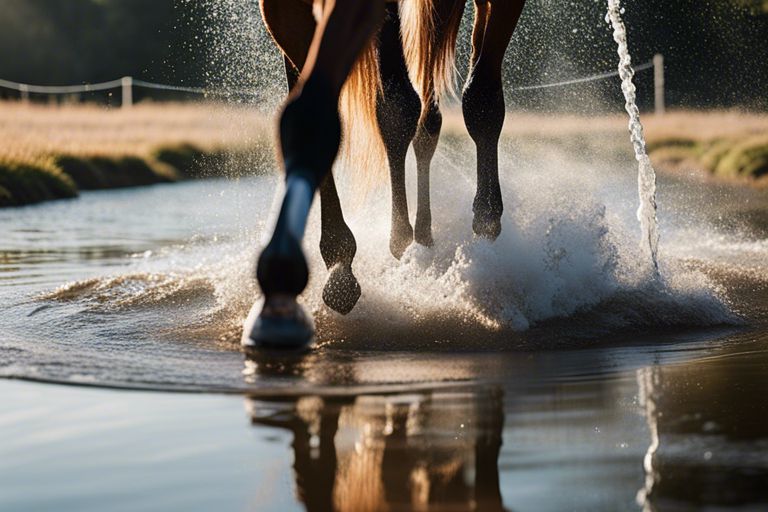
Why Cooling Down is Crucial
To ensure the health and well-being of your horse, cooling down after exercise is crucial. Regulating your horse’s body temperature and heart rate are crucial for preventing potential issues that can arise from overheating. Cooling down allows your horse’s body to return to a normal state gradually, reducing the risk of shock or strain on their cardiovascular system.
Preventing Heat Stroke and Exhaustion
For preventing heat stroke and exhaustion, cooling down is vital. If your horse’s body temperature remains elevated for an extended period after exercise, it can lead to heat-related illnesses such as heat stroke. By gradually lowering their body temperature through a proper cool-down routine, you can help prevent these dangerous conditions.
Reducing Muscle Soreness and Injury
For reducing muscle soreness and injury, cooling down plays a crucial role. After intense exercise, your horse’s muscles can be fatigued and susceptible to injury. Cooling down allows the muscles to gradually relax and recover, reducing the risk of soreness and potential injuries.
This step is especially important for horses involved in strenuous activities like jumping or racing, where muscles endure significant strain. By incorporating a proper cool-down routine into your post-exercise regimen, you can help your horse recover effectively and maintain their overall health and performance.
Immediate Post-Exercise Care
Providing Adequate Ventilation
To begin the immediate post-exercise care for your horse, it is crucial to ensure adequate ventilation in their immediate environment. This can help your horse cool down more efficiently and prevent the risk of overheating. Good ventilation will help them regulate their body temperature and recover properly after strenuous exercise. Make sure there is fresh air circulating in their stable or resting area to aid in the cooling process.
Removing Saddles and Equipment
The next step in caring for your horse after exercise is removing saddles and equipment. After a workout, the saddle and any other tack can retain heat and moisture, potentially causing discomfort and skin irritation. Removing the saddle and equipment promptly allows your horse’s skin to breathe and cool down more effectively. It also gives you the opportunity to check for any signs of rubbing or sores that may have developed during exercise.
The removal of the saddle and equipment is a simple yet important step in ensuring your horse’s comfort and well-being. Taking the time to properly inspect your horse’s skin after removing the gear can help you catch any issues early and prevent further discomfort.
Offering Water and Electrolytes
With the saddle off and your horse in a well-ventilated space, the next crucial step is to offer water and electrolytes. Replenishing lost fluids and electrolytes is crucial for your horse’s recovery process. Hydration plays a significant role in maintaining your horse’s health and preventing issues such as dehydration and muscle cramps. Make sure to have fresh water available for your horse to drink and consider offering electrolyte supplements to aid in their recovery.
On Offering Water and Electrolytes
Hydration is key to your horse’s well-being, especially after exercise. Proper electrolyte balance is crucial for muscle function and overall health. After a workout, encouraging your horse to drink water and providing electrolytes can help replenish what was lost during exercise. Be sure to monitor your horse’s water intake and consult with your veterinarian on the appropriate electrolyte supplement regimen for your horse’s needs.
Cooling Techniques
Your horse’s body temperature can rise significantly during exercise, and it’s crucial to cool them down properly to prevent overheating. Here are some effective cooling techniques you can use after a strenuous workout.
Hosing Down with Cold Water
An effective way to cool down your horse quickly is by hosing them down with cold water. Start by wetting the horse’s neck, chest, and legs, then gradually work your way over the rest of their body. **Be sure to use a gentle spray nozzle to avoid shocking them with the cold water.** The water helps to lower their body temperature and aids in the cooling process. Focus on areas where blood vessels are close to the surface, such as the neck and underbelly, to maximize the cooling effect.
Using Cooling Blankets and Vests
Water cooling blankets and vests are another effective way to help your horse cool down after exercise. **These specialized blankets or vests are designed to hold water and slowly release it, drawing heat away from your horse’s body.** They can be particularly useful in hot weather or for horses who have trouble cooling down quickly on their own. Simply soak the blanket or vest in cold water, wring out any excess, and then place it on your horse to help lower their body temperature.
Cold: Cooling blankets and vests can be a lifesaver in situations where your horse needs rapid cooling, such as after a strenuous workout or on a hot day. **They can help prevent heat stress and keep your horse comfortable and healthy.**
Applying Ice Packs and Cold Compresses
On particularly hot days or after intense exercise, applying ice packs or cold compresses to key areas can help bring your horse’s body temperature down quickly. **Focus on areas with major blood vessels close to the surface, such as the neck, chest, and underbelly.** Wrap the ice packs or cold compresses in a towel to prevent direct contact with the skin and apply them for short intervals to avoid causing discomfort.
Blankets: Ice packs and cold compresses can be particularly useful for localized cooling, such as targeting specific areas that may be prone to overheating or inflammation. **Be sure to monitor your horse’s reaction and remove the ice packs if they show signs of discomfort or shivering.**
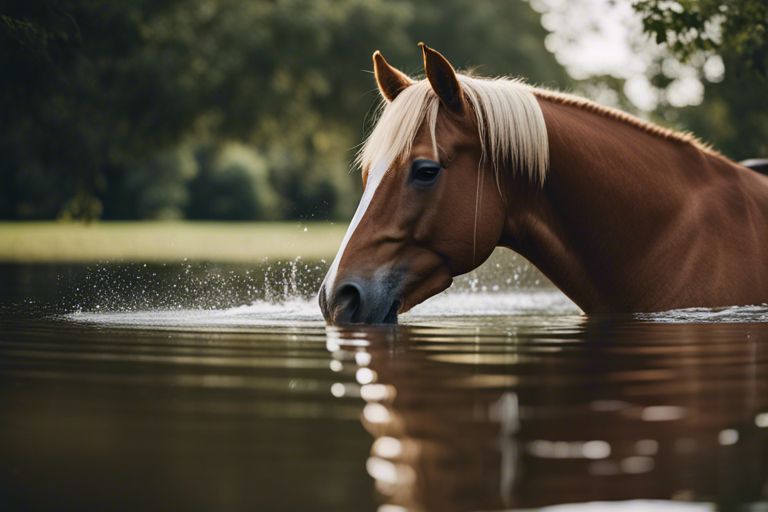
Gradual Cooling Methods
Walking and Trotting to Reduce Body Temperature
The best way to gradually cool down your horse after exercise is by walking and trotting to reduce body temperature. This method allows your horse’s body temperature to decrease slowly and prevents sudden temperature changes that can be harmful.
| Activity | Description |
| Walking | Helps lower heart rate and cool down muscles |
| Trotting | Increases airflow and aids in the cooling process |
Using Fans and Misters for Evaporative Cooling
On hot days, using fans and misters for evaporative cooling can be very effective in helping your horse cool down. Fans help circulate air and speed up the evaporation of sweat, while misters provide a cooling effect as the water evaporates from your horse’s skin.
Body temperature regulation is crucial for your horse’s health. Understanding how to utilize fans and misters can greatly assist in efficiently cooling your horse down after strenuous exercise, especially in high temperatures.
Providing Shade and Rest
Evaporative cooling is enhanced when your horse is provided with shade and rest after exercise. Resting in a shaded area allows the horse to cool down naturally while avoiding direct sunlight, which can increase body temperature.
Monitoring Your Horse’s Vital Signs
All horses are individuals, and it’s crucial to closely monitor your horse’s vital signs during and after exercise to ensure their well-being. By keeping an eye on their pulse, respiratory rate, behavior, body language, and temperature, you can better understand how your horse is coping with the workout and take appropriate action if needed.
Checking Pulse and Respiratory Rate
Respiratory rate refers to the number of breaths your horse takes per minute. A normal resting rate for an adult horse is around 8-16 breaths per minute, although this can vary depending on factors like fitness level and environmental conditions. After exercise, it’s normal for the rate to increase, but it should return to normal within 10-15 minutes of rest. **An elevated respiratory rate that doesn’t decrease could indicate overheating or overexertion**. Similarly, monitoring your horse’s pulse can provide valuable insights into their cardiovascular health. A normal resting heart rate for a horse is 28-44 beats per minute, with it increasing during exercise and then gradually decreasing as they recover. **A persistently elevated heart rate may signal that your horse is struggling to cool down**.
Observing Behavior and Body Language
Signs of stress or distress in your horse can manifest in various behaviors and body language cues. **Watch for signs of exhaustion, such as excessive sweating, heavy breathing, reluctance to move, or trembling**. **Monitoring your horse’s posture and facial expressions can also indicate their comfort level and overall well-being**. If your horse is showing signs of distress, it’s important to take immediate action to help them cool down and recover.
Monitoring your horse’s vital signs is an crucial part of caring for their well-being. By regularly checking their pulse, respiratory rate, behavior, and body language, you can quickly identify any potential issues and take appropriate measures to ensure your horse’s health and safety.
Measuring Rectal Temperature
| Normal Temperature: | 99-101.5°F (37.2-38.6°C) |
| Dangerous Signs: | A rectal temperature above 103°F (39.4°C) can indicate heat stress or exertional heat stroke. |
One vital sign that can provide valuable insights into your horse’s well-being is their rectal temperature. A typical temperature range for a horse is **between 99-101.5°F (37.2-38.6°C)**. **If you notice a significant increase in body temperature post-exercise, it’s crucial to take action to cool your horse down and prevent heat-related complications.**
Measuring Rectal Temperature: Regularly check your horse’s rectal temperature to ensure they are within the normal range. Use a digital equine thermometer and lubricant for comfort and accuracy. If you notice any abnormal spikes in temperature, consult your veterinarian for further guidance.
**Keep in mind, monitoring your horse’s vital signs is a crucial aspect of responsible horse ownership. By staying vigilant and responsive to any changes, you can help keep your equine partner healthy and happy.**
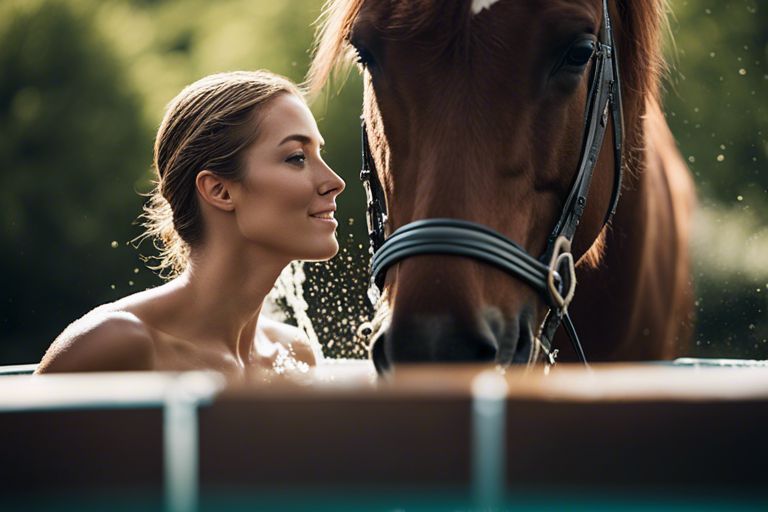
Special Considerations
Cooling Down Horses with Certain Health Conditions
Not all horses are the same, and some may have underlying health conditions that require special attention during the cooling down process. Any horse with cardiac, respiratory, or metabolic issues should be cooled down gradually and carefully. It’s important to monitor these horses closely for any signs of distress or exacerbation of their condition during the cooldown.
Adjusting Cooling Methods for Different Climates
Considerations should be made when cooling down your horse in different climates. In hot and humid conditions, extra care should be taken to ensure your horse is not overheating. In contrast, cooling down in cold weather requires balancing the need to lower body temperature without causing your horse to become chilled.
Conditions in extreme climates such as desert areas or high altitudes need to be taken into account when cooling down your horse. Extra precautions may be necessary in these environments to prevent heatstroke or hypothermia, depending on the conditions.
Involving Your Veterinarian in Cooling Down Protocols
Any concerns about your horse’s health or any changes in their condition during or after exercise should be discussed with your veterinarian. Another important factor is if your horse is on any medication that could affect their response to exercise or temperature regulation, your vet can provide guidance on adapting the cooling down process accordingly.
Summing up
From above, it is crucial to understand the importance of properly cooling down your horse after exercise to prevent any potential health issues. By gradually reducing the intensity of the workout, walking your horse, and using techniques such as hosing and scraping, you can effectively bring your horse’s body temperature back to normal levels and help them recover swiftly. Keep in mind, a proper cool down routine is not just beneficial for your horse’s physical well-being but also for building a strong bond between you and your equine companion.
Q: Why is it important to cool down your horse after exercise?
A: Cooling down your horse after exercise helps prevent muscle stiffness, reduce the risk of injury, and allow their heart rate and breathing to return to normal levels.
Q: What are some effective ways to cool down your horse after exercise?
A: Some effective ways to cool down your horse include walking them out, hosing them off with cool water, using cooling blankets, and offering them access to fresh water.
Q: How long should you cool down your horse after exercise?
A: It is recommended to cool down your horse for at least 10-15 minutes after exercise to allow their body to gradually return to a resting state.
Q: What are signs that indicate your horse needs more cooling down?
A: Signs that your horse may need more cooling down include heavy breathing, elevated heart rate, excessive sweating, and signs of distress or discomfort.
Q: Can improper cooling down lead to health issues for your horse?
A: Yes, improper cooling down can lead to health issues such as muscle cramps, heat stress, and even potentially dangerous conditions like colic or tying-up. It is important to ensure your horse is properly cooled down after exercise to maintain their well-being.
